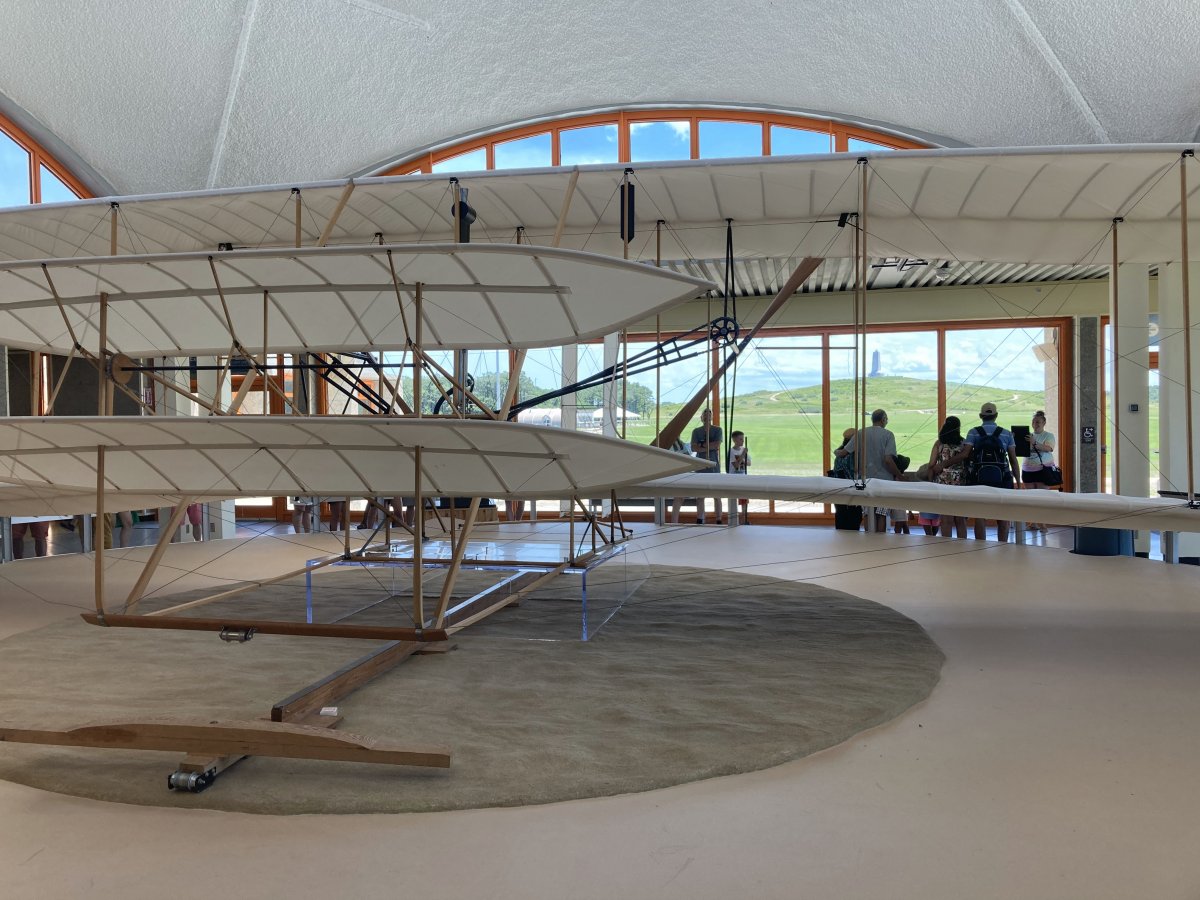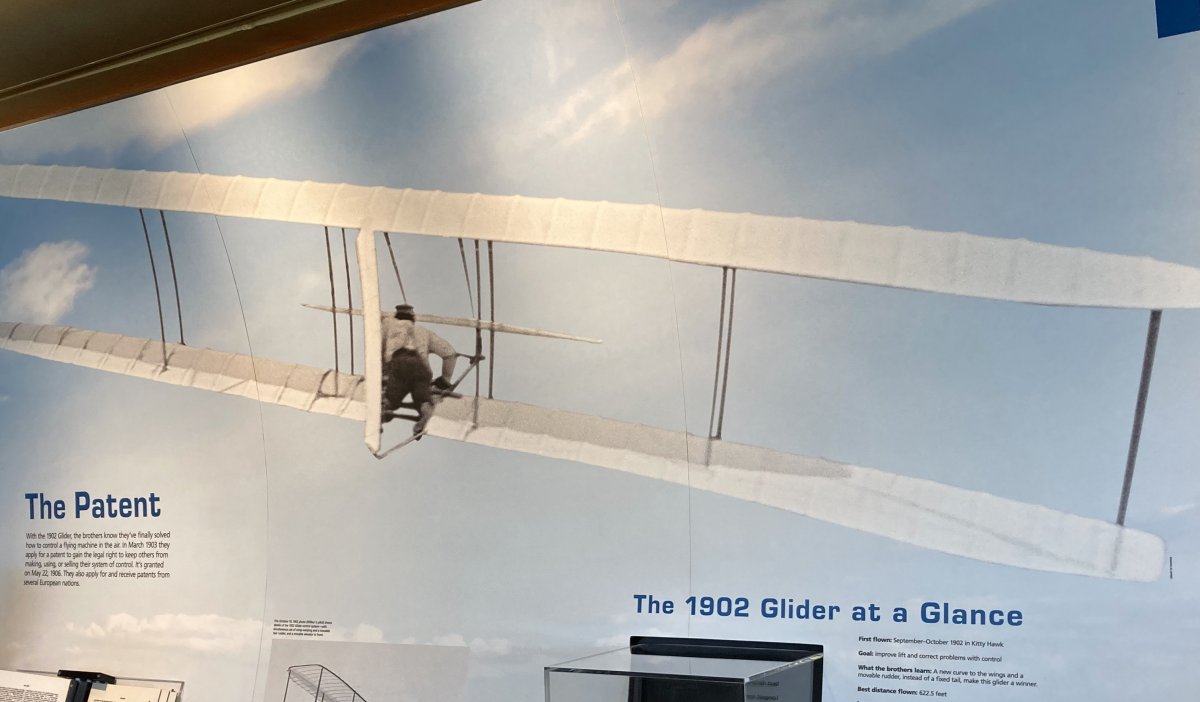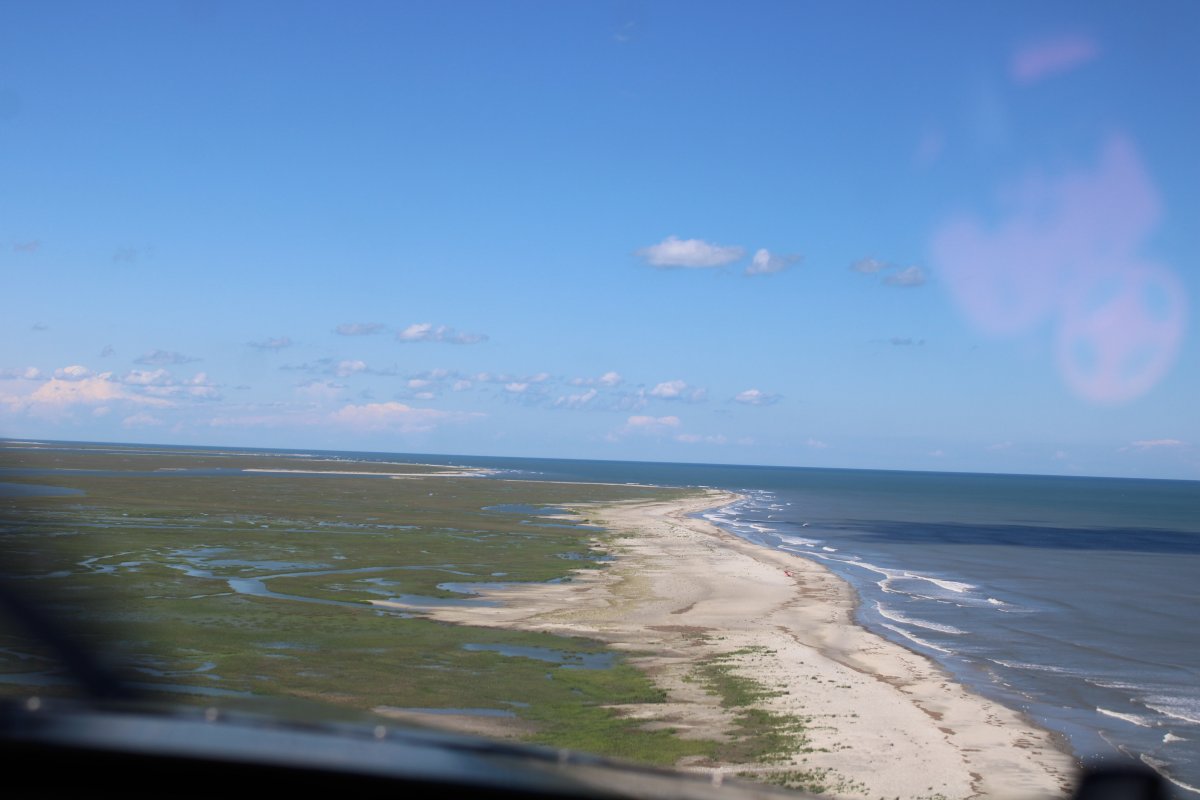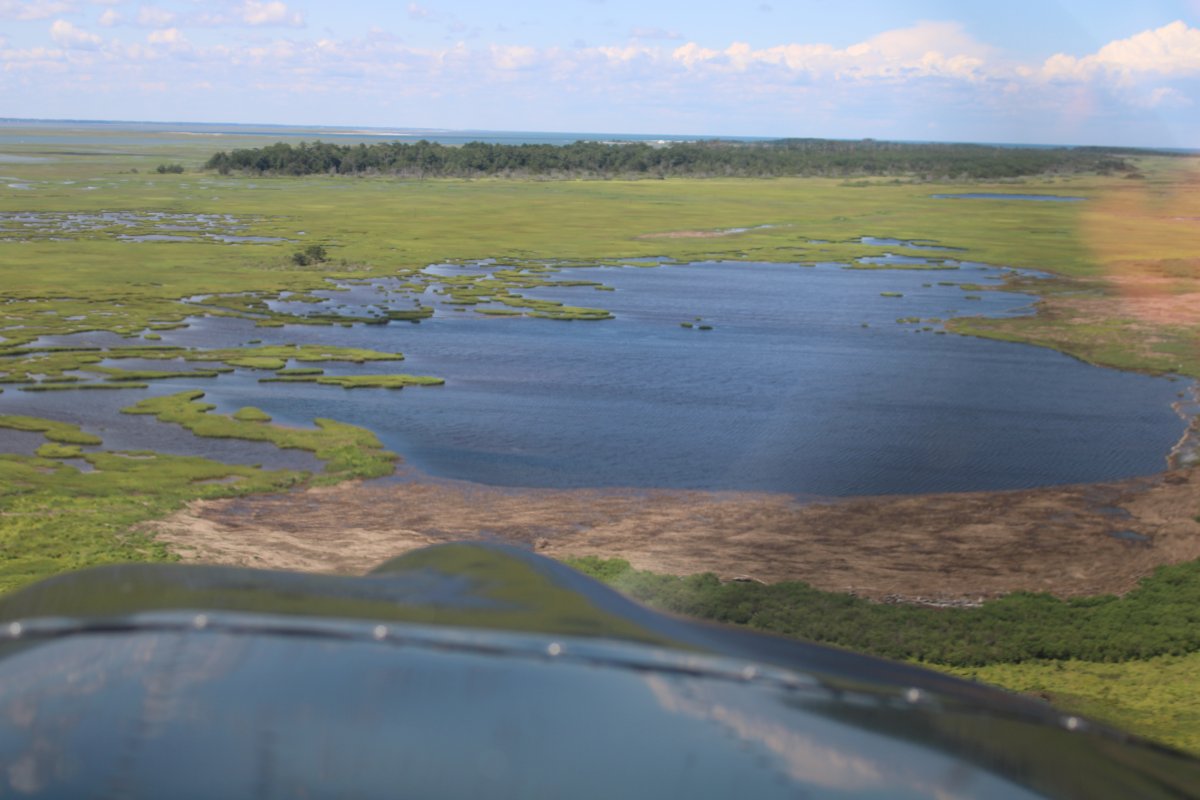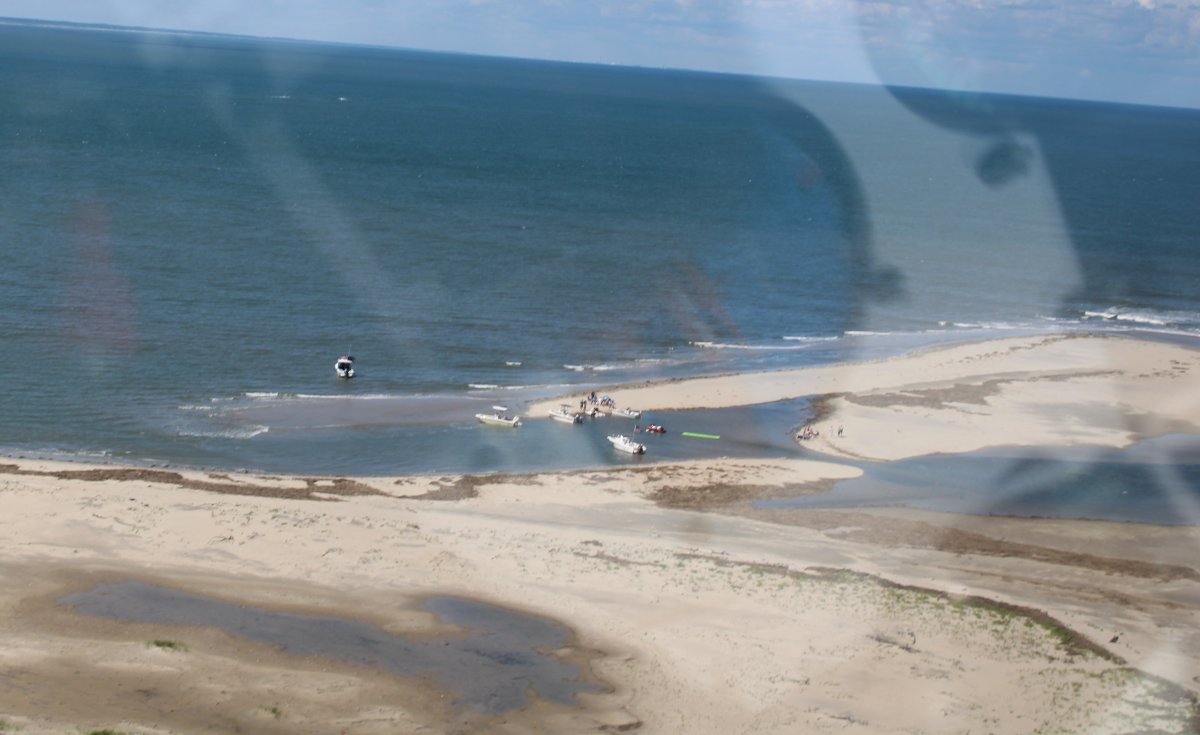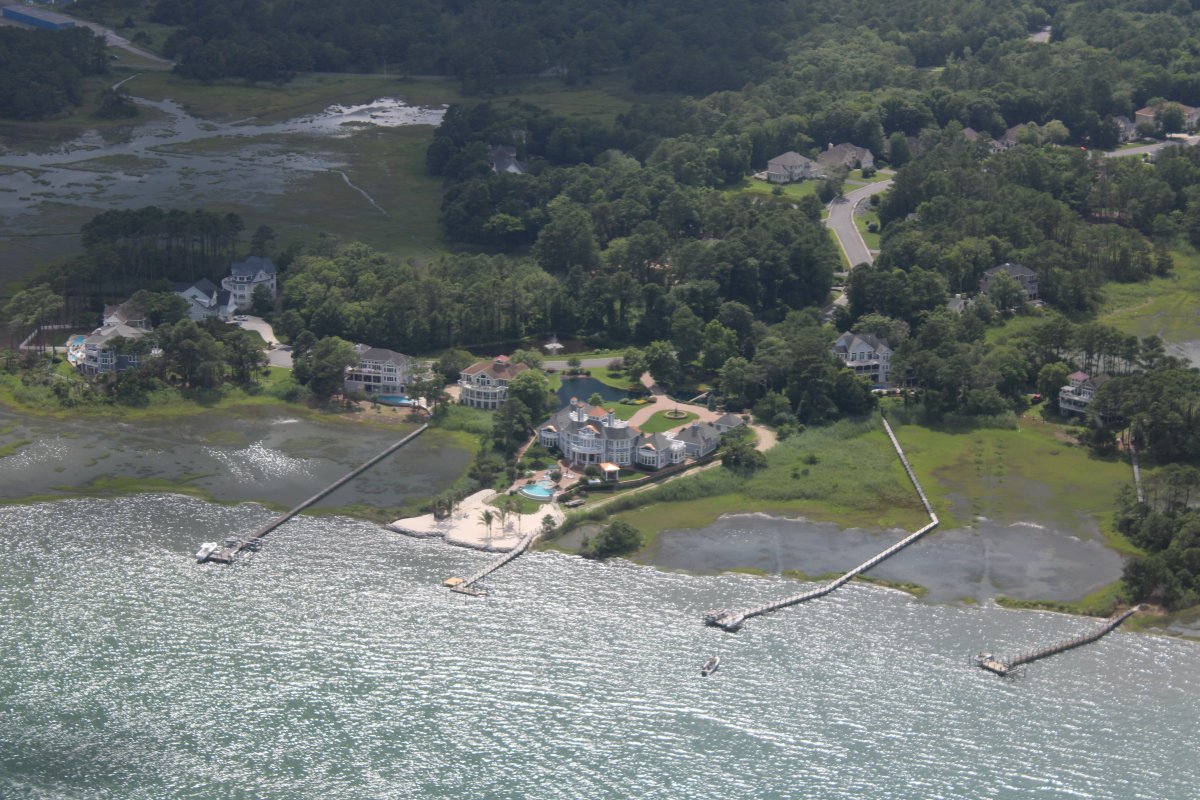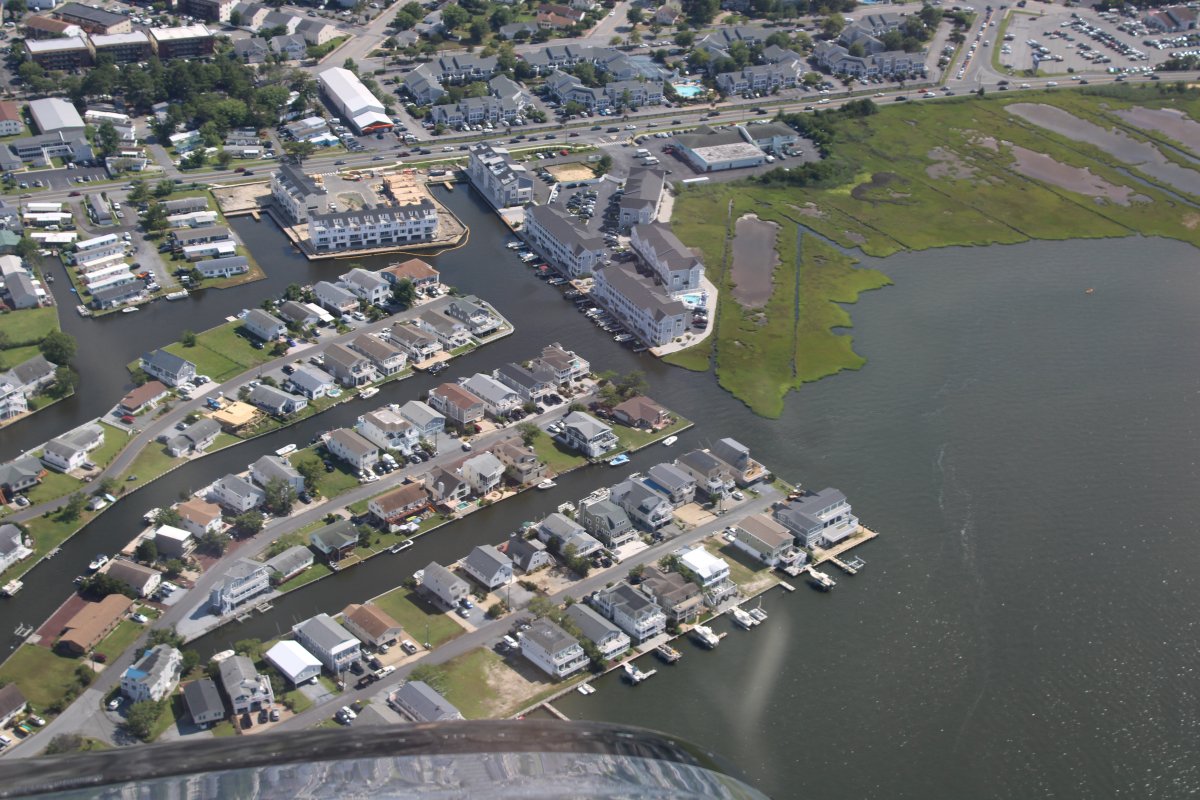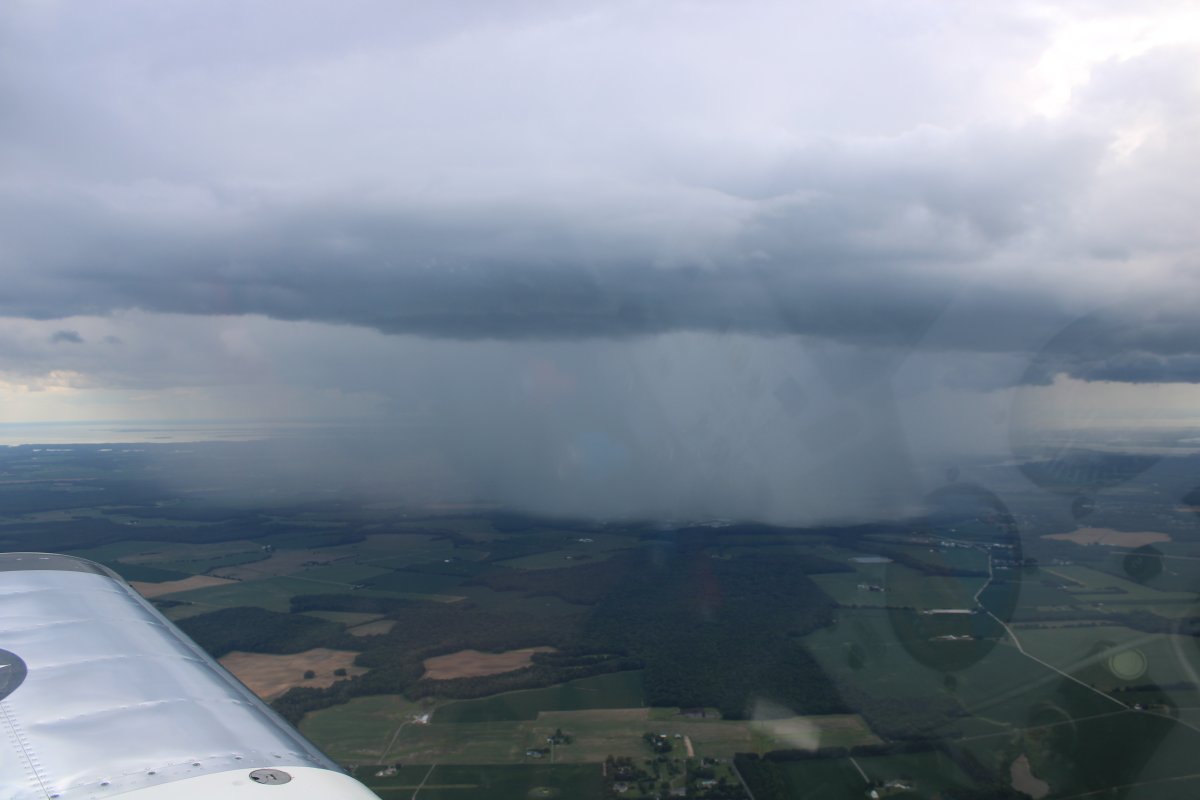July 3, 2021 - Kitty Hawk with Beau
I took my son-in-law Beau flying today on a beautiful day for flying. First stop, Cambridge Airport for a delicious breakfast at "Kay's at the Airport". Chuck B. -- who has been flying the heck out of his newly acquired RV-7A -- joined us.
I just finished spending 22 hours polishing the RV; I told Beau "don't touch the aluminum!".
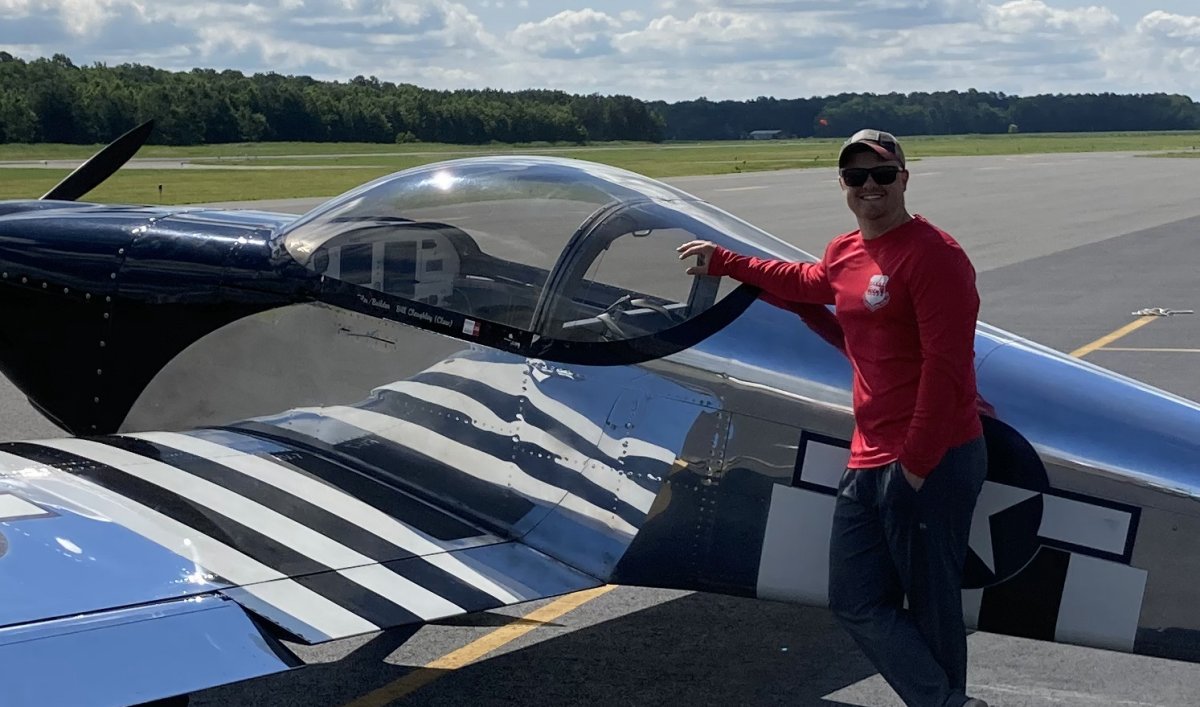
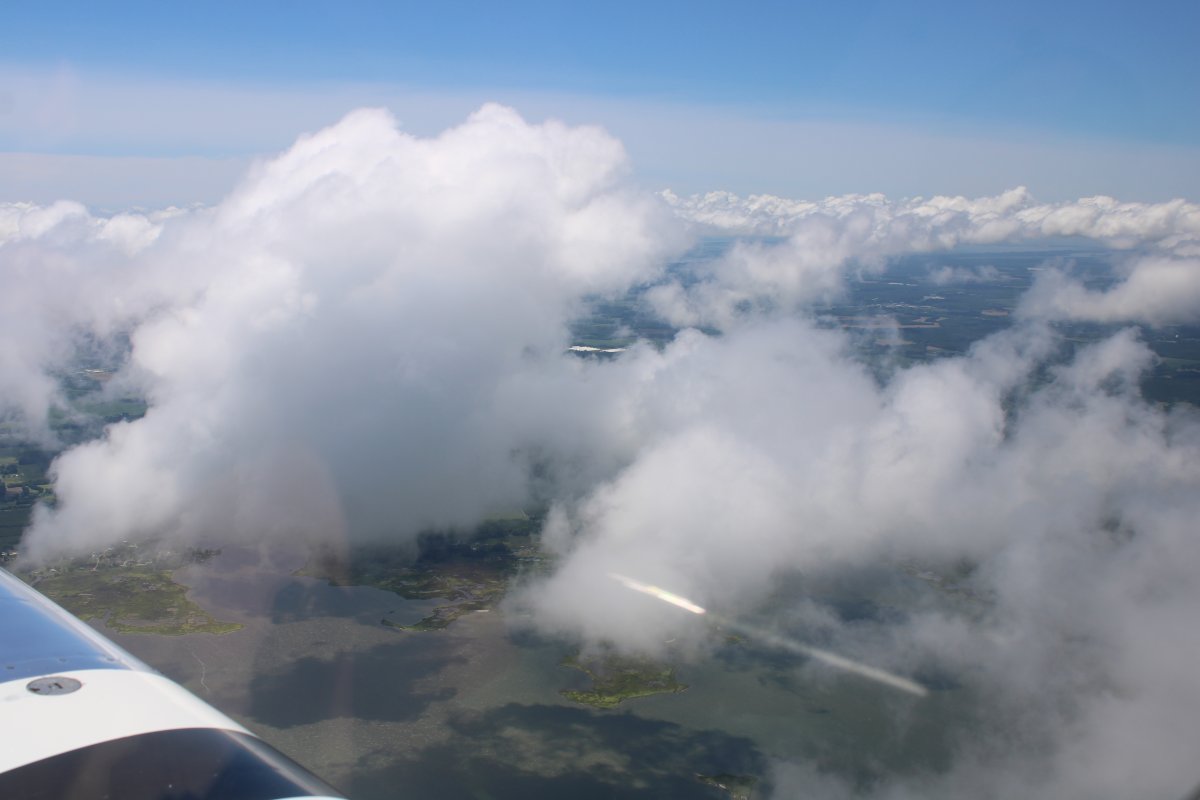
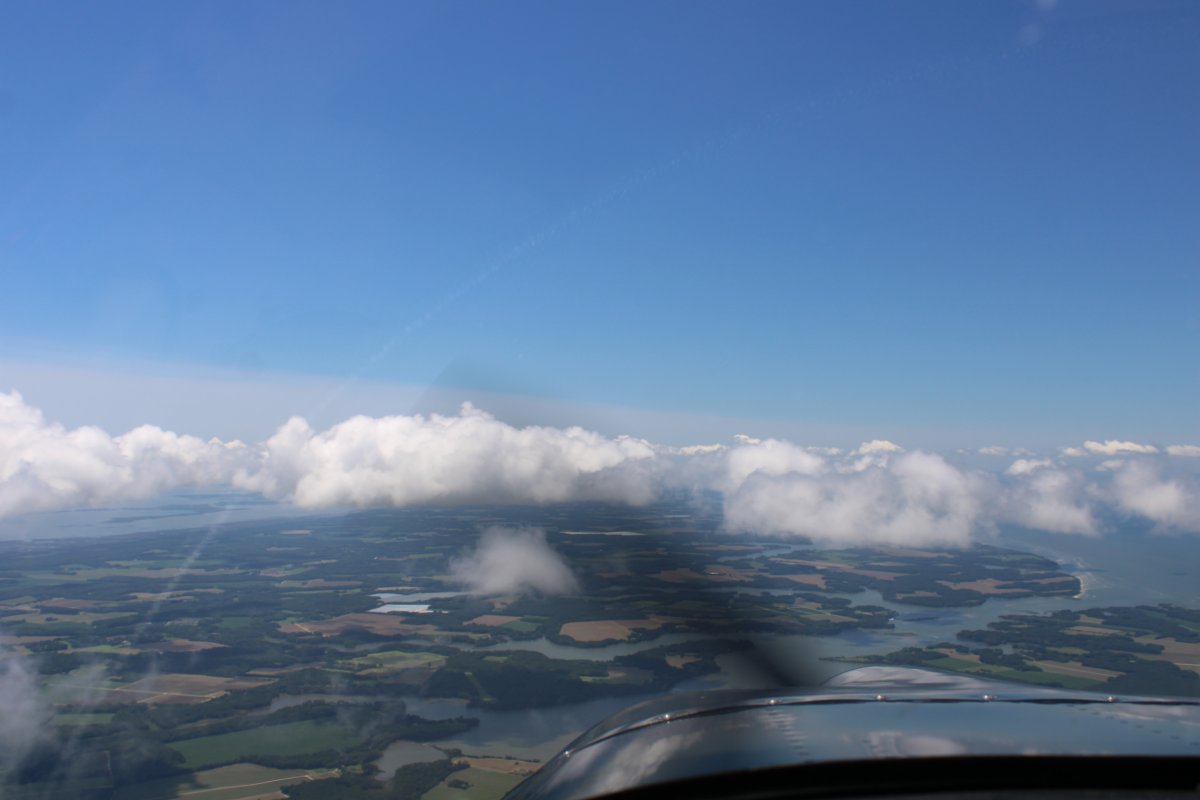
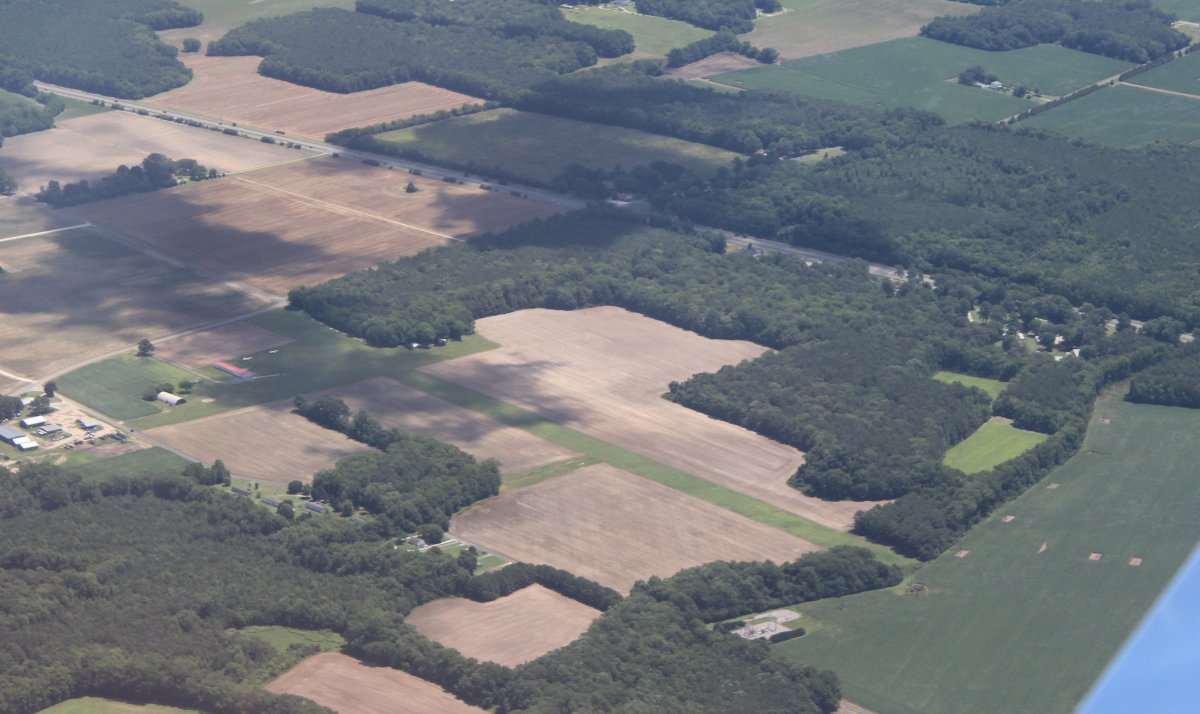
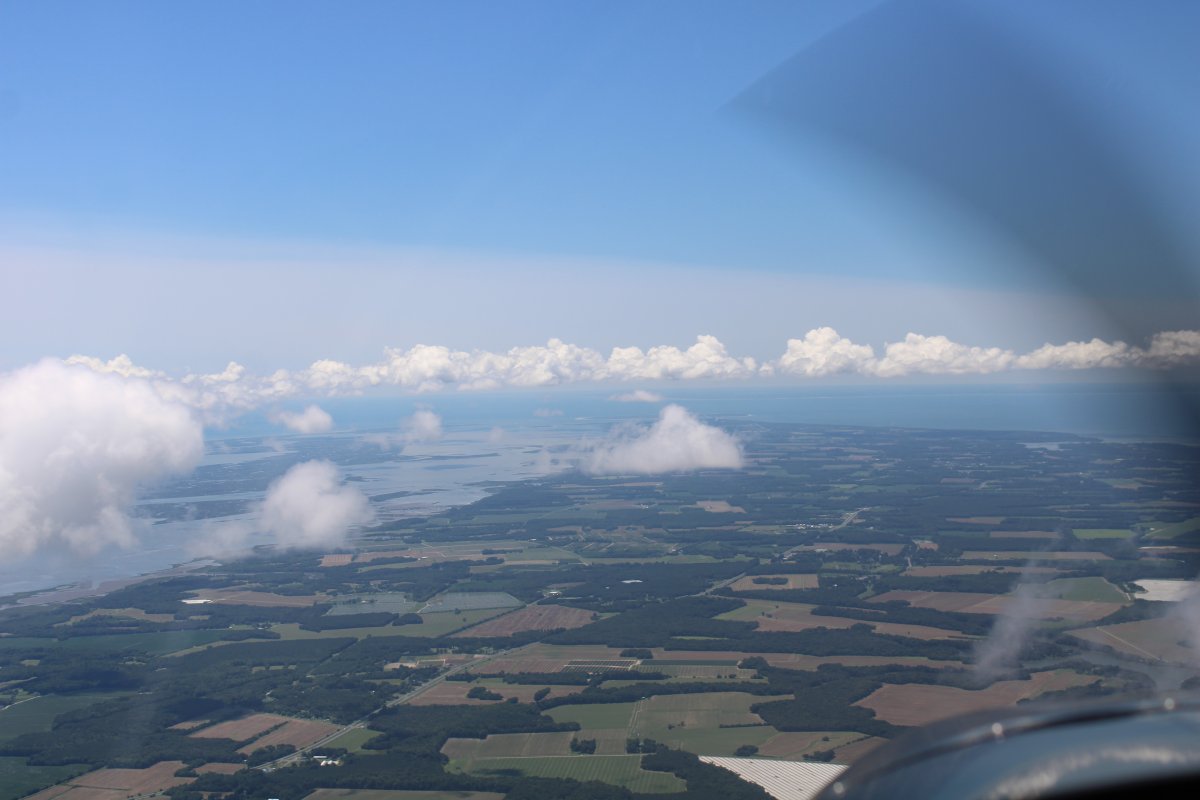
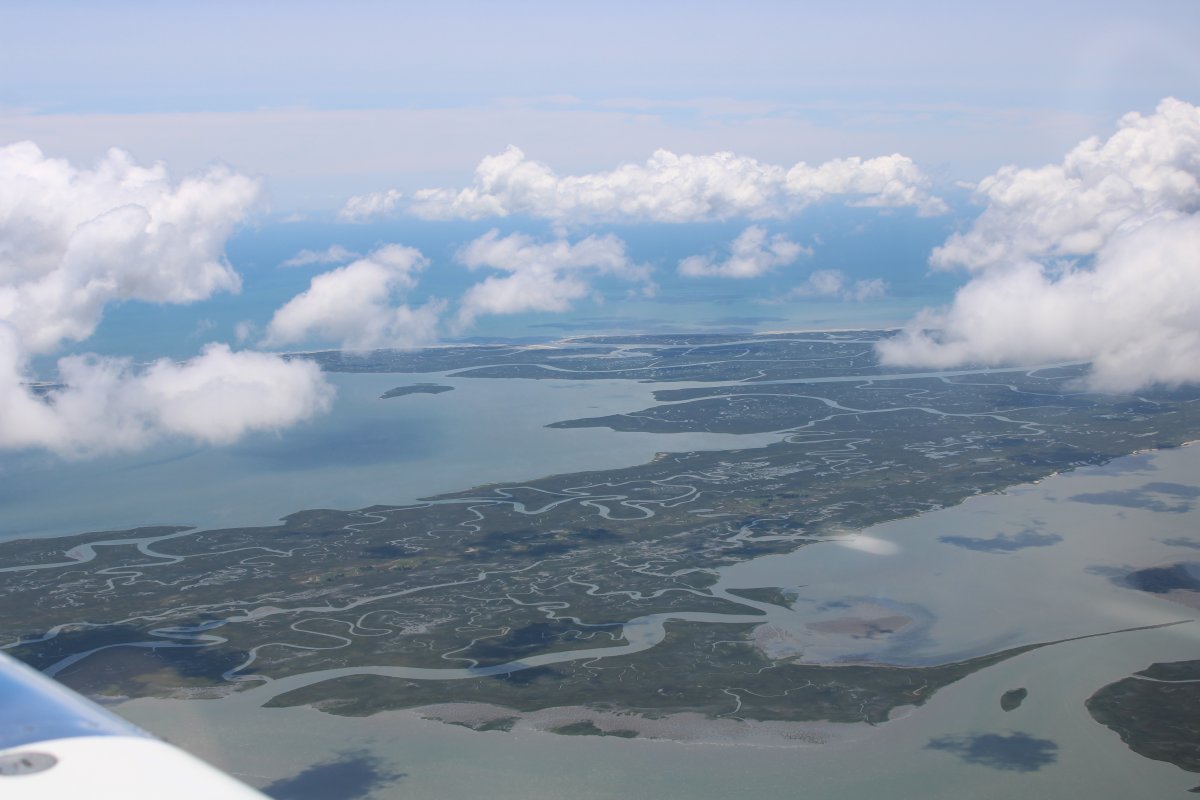
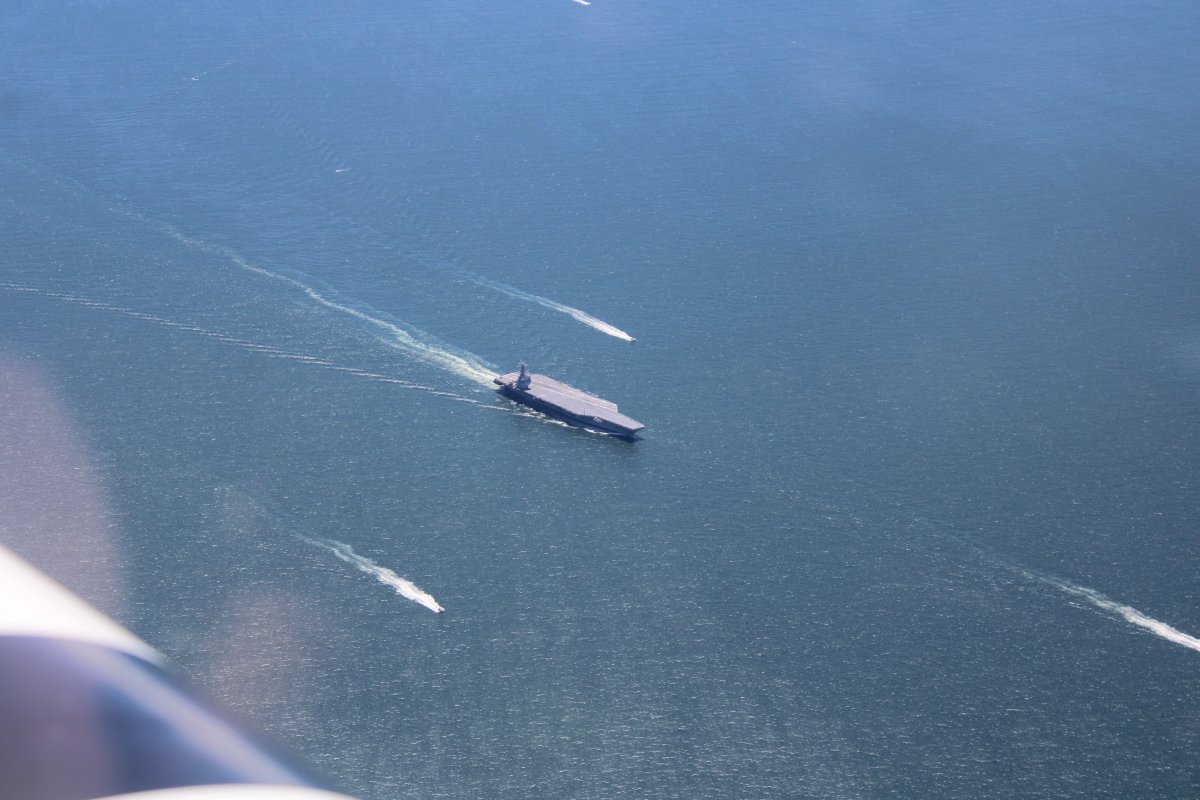
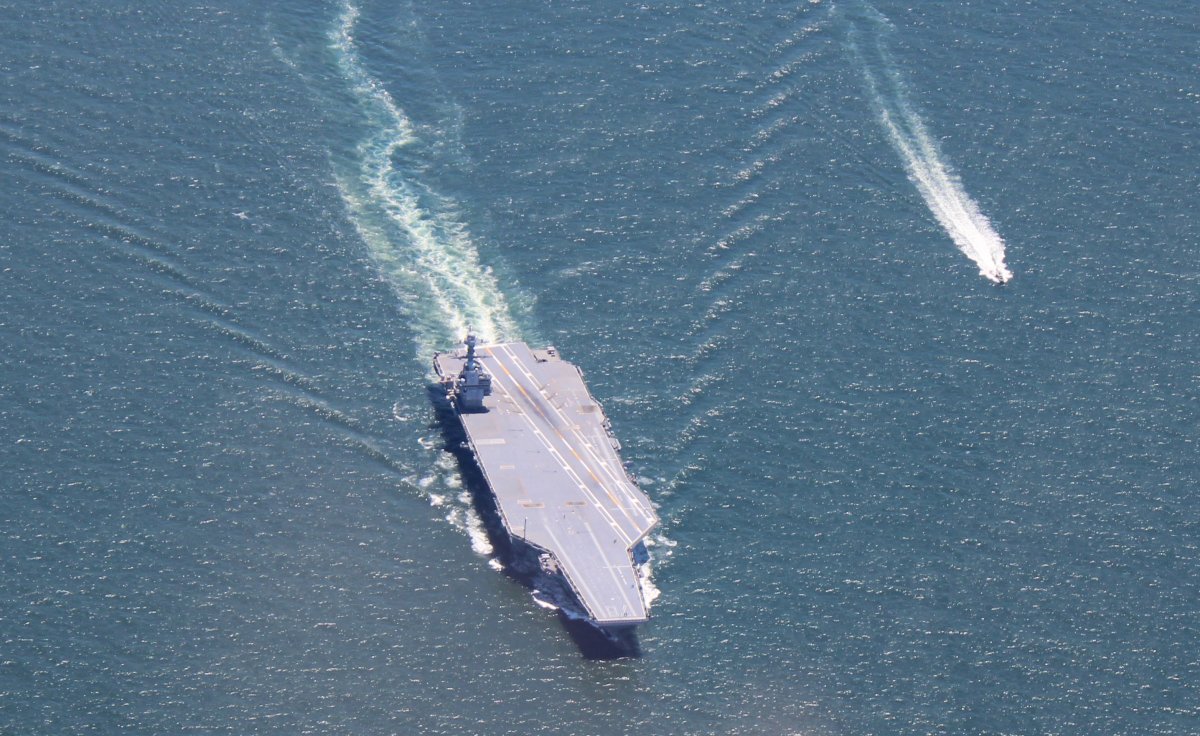
Her keel was laid in 2009. On 9 November 2013, the ship was christened by Ford's daughter, Susan Ford Bales. On 31 May 2017, Newport News Shipbuilding delivered Gerald R. Ford to the U.S. Navy and her status was changed to Special, in service. Gerald R. Ford was formally commissioned into the United States Navy on 22 July 2017. On 28 July 2017, Lt. Cmdr. Jamie "Coach" Struck of Air Test and Evaluation Squadron 23 (VX-23) performed the first arrested landing and catapult launch from Gerald R. Ford in an F/A-18F Super Hornet.
Unfortunately, since then the Ford hasn't done so well. Costs have grown to over $13 billion, making the Gerald R. Ford the most expensive warship ever built. I can remember when a Nimitz-class carrier cost $2 billion. Apparently there are still significant problems with the operation of its weapons elevators, while a DoD report in early 2021 stated that the ship was still not combat-ready, citing continuing problems with the Electromagnetic Aircraft Launch System (EMALS). Designed to achieve 4,166 aircraft launches between operational mission failures, instead it went 181 launches between failures, "well below the requirement".
Furthermore, I must say, I'm not thrilled about naming an aircraft carrier after President Gerald Ford. Sure, Ford served in the Navy during WWII but let's face it, he's not exactly up there with great Presidents like George Washington, Abraham Lincoln and Ronald Reagan for which existing carriers are named. Or Teddy Roosevelt or Harry Truman. If carriers are going to be named after presidents, what about FDR who was a great wartime president and loved the Navy? Or some of the legendary carrier names like Enterprise, Lexington or Yorktown? Or great U.S. Navy leaders like Spruance, King and Halsey?
Future Ford-class carriers -- if the country can afford them -- will be named John F. Kennedy (CVN-79), Enterprise (CVN-80), Doris Miller (CVN-81).
All that said, it was awesome to fly over the big carrier. Even at 4,500 feet, it was huge!
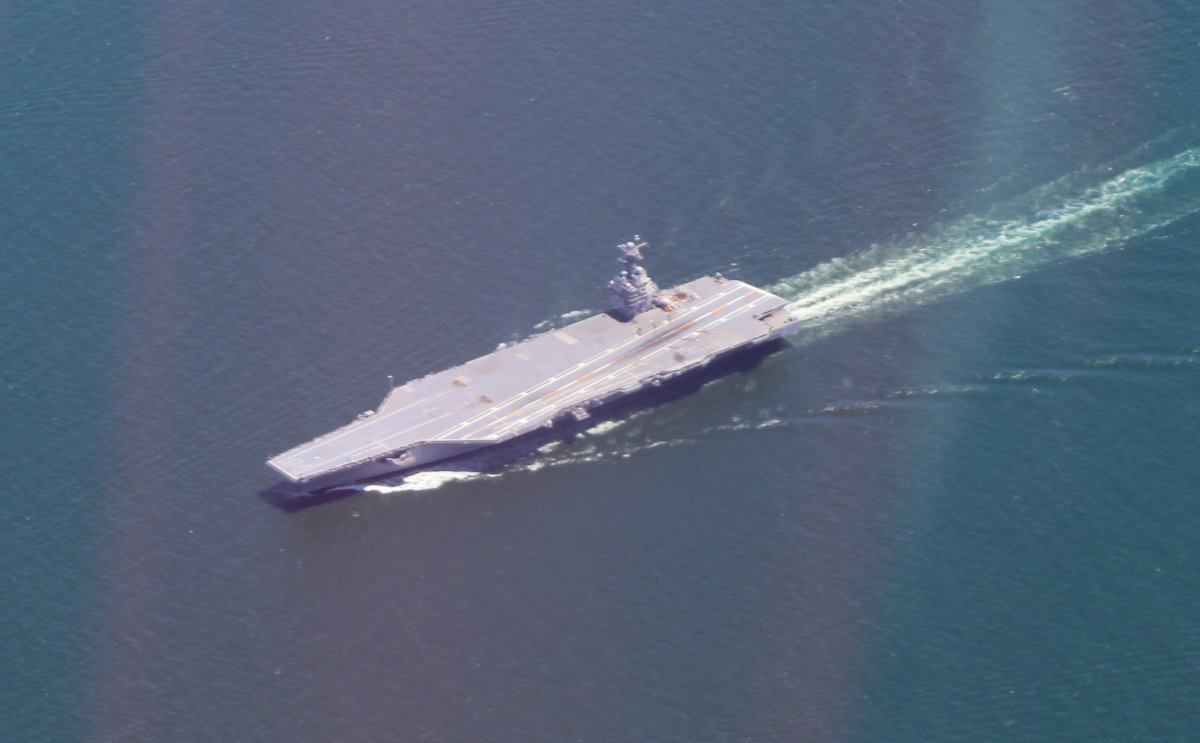
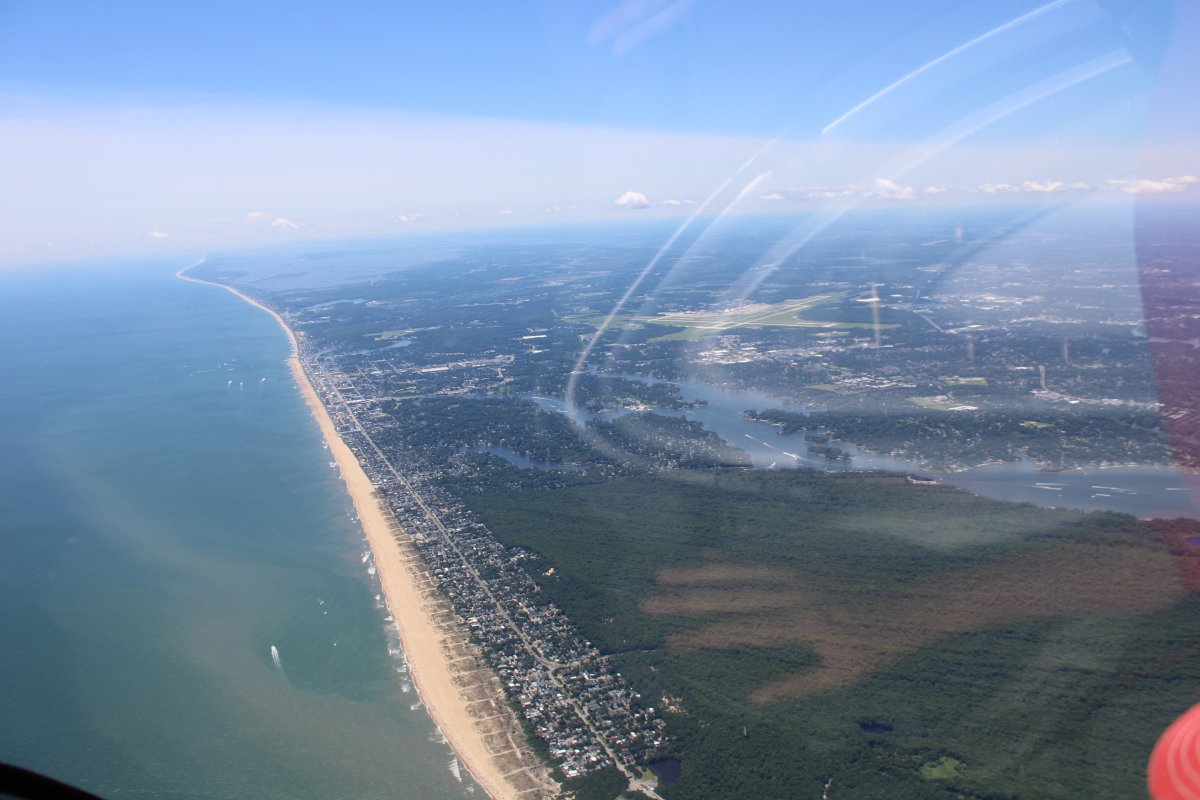
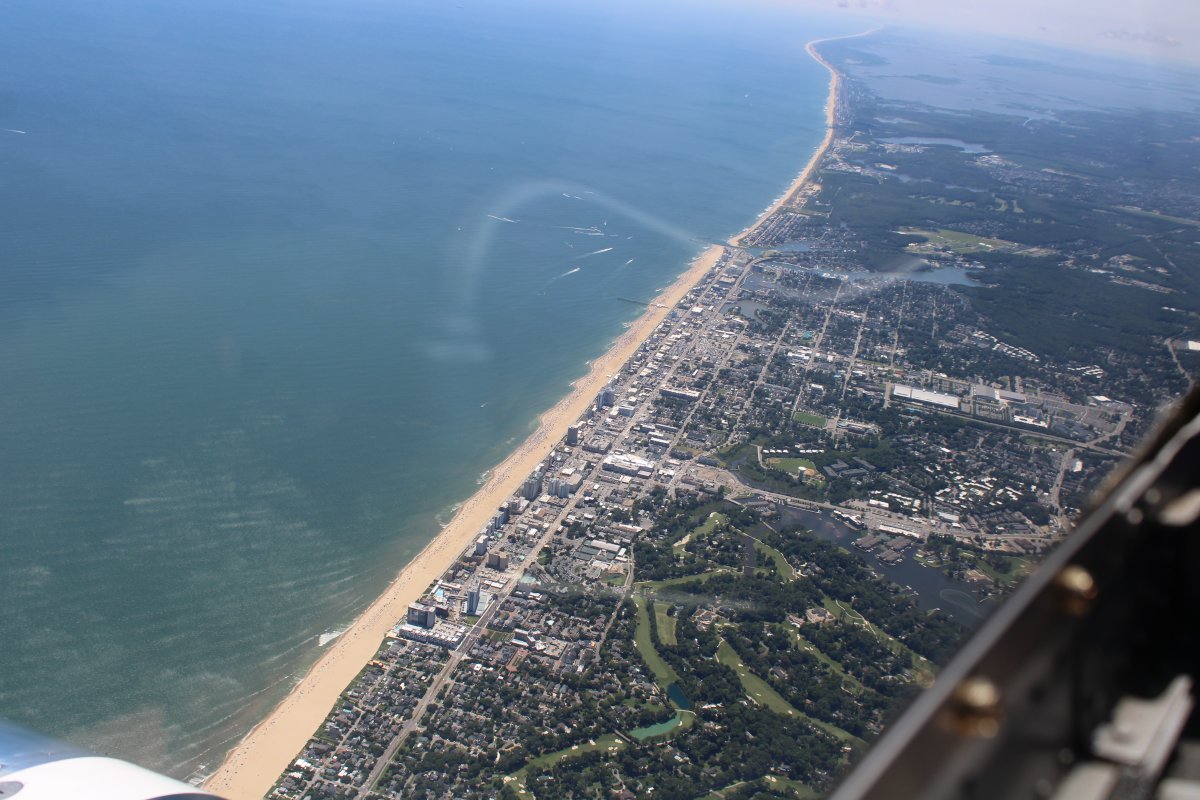
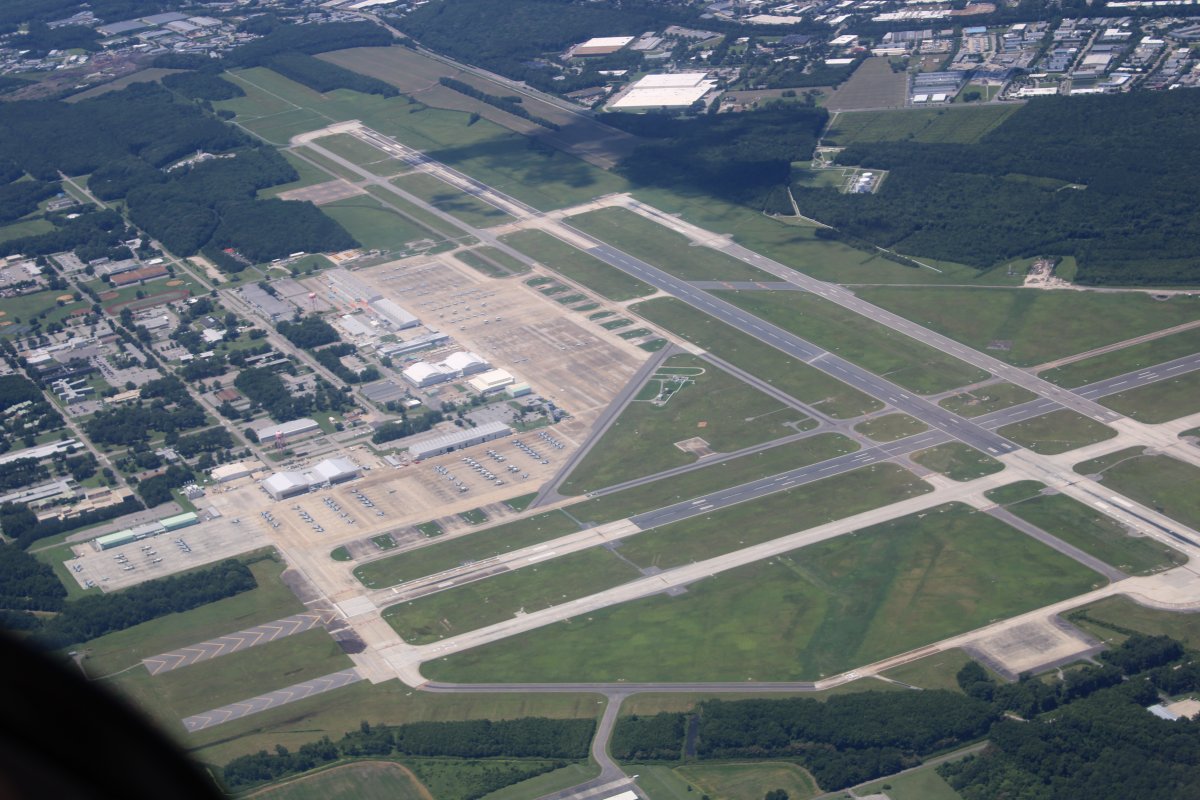
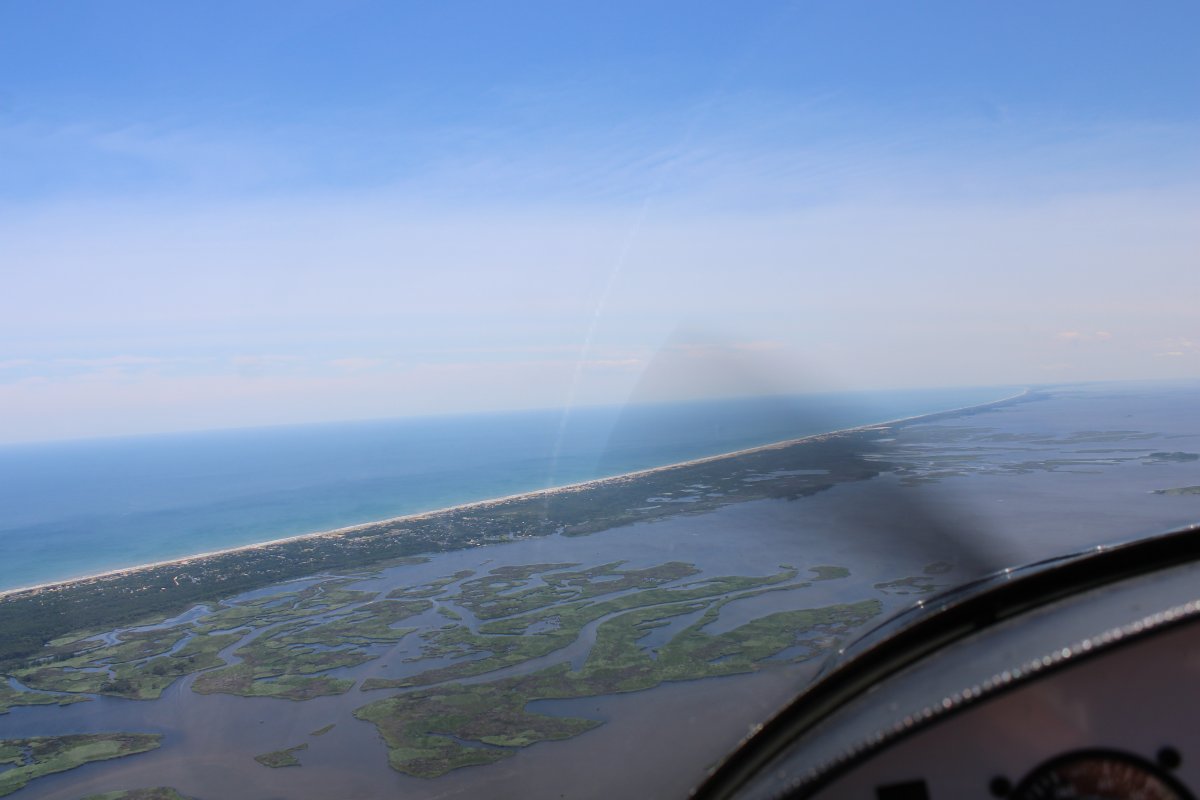
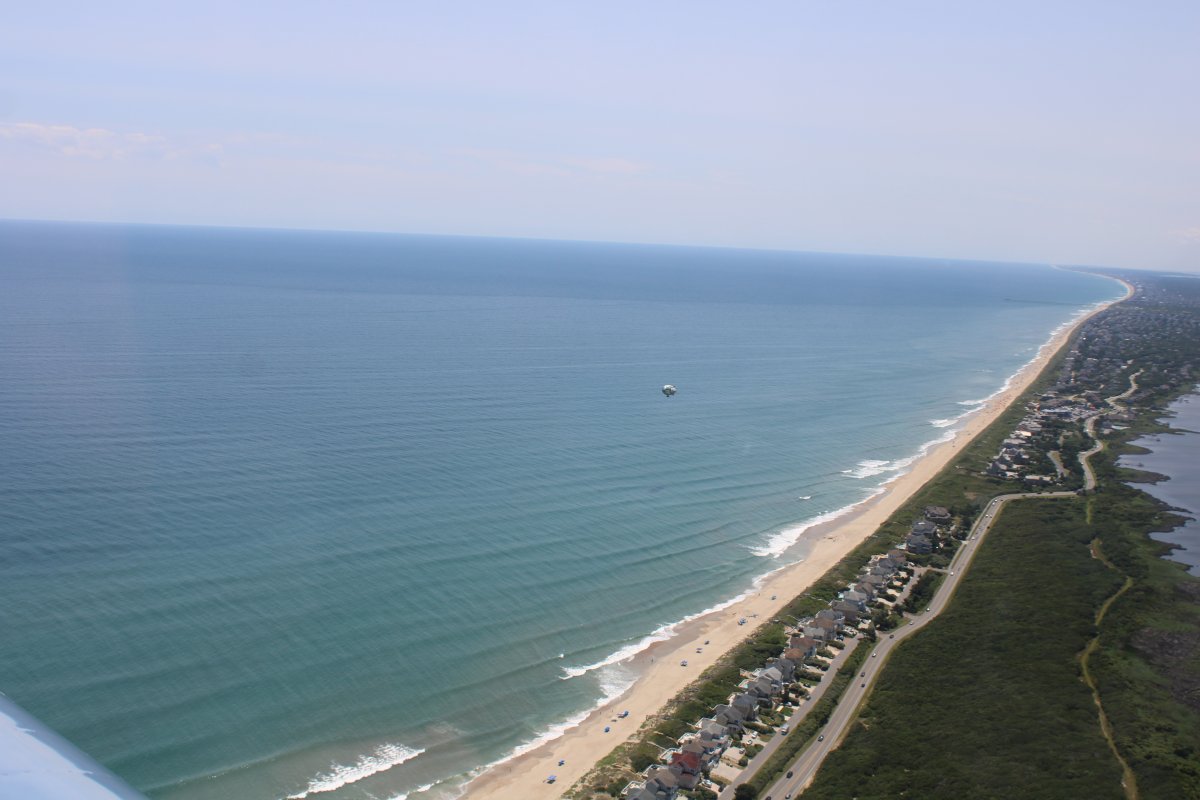
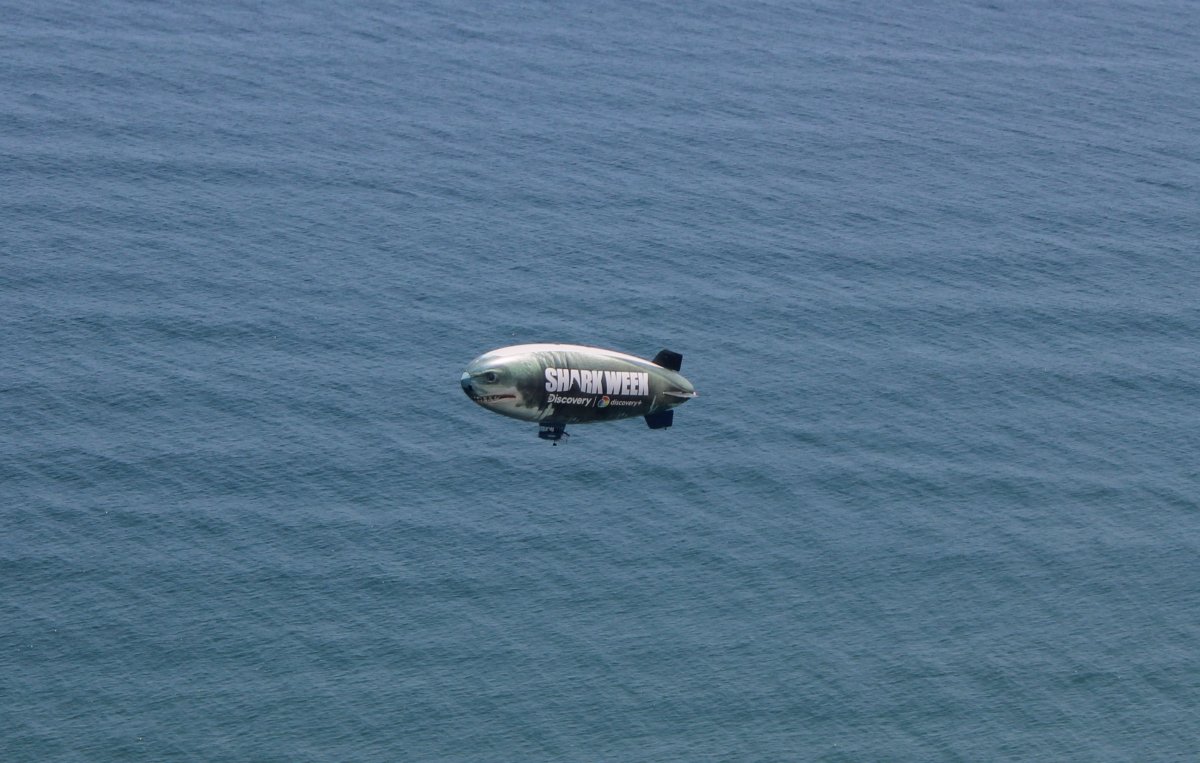
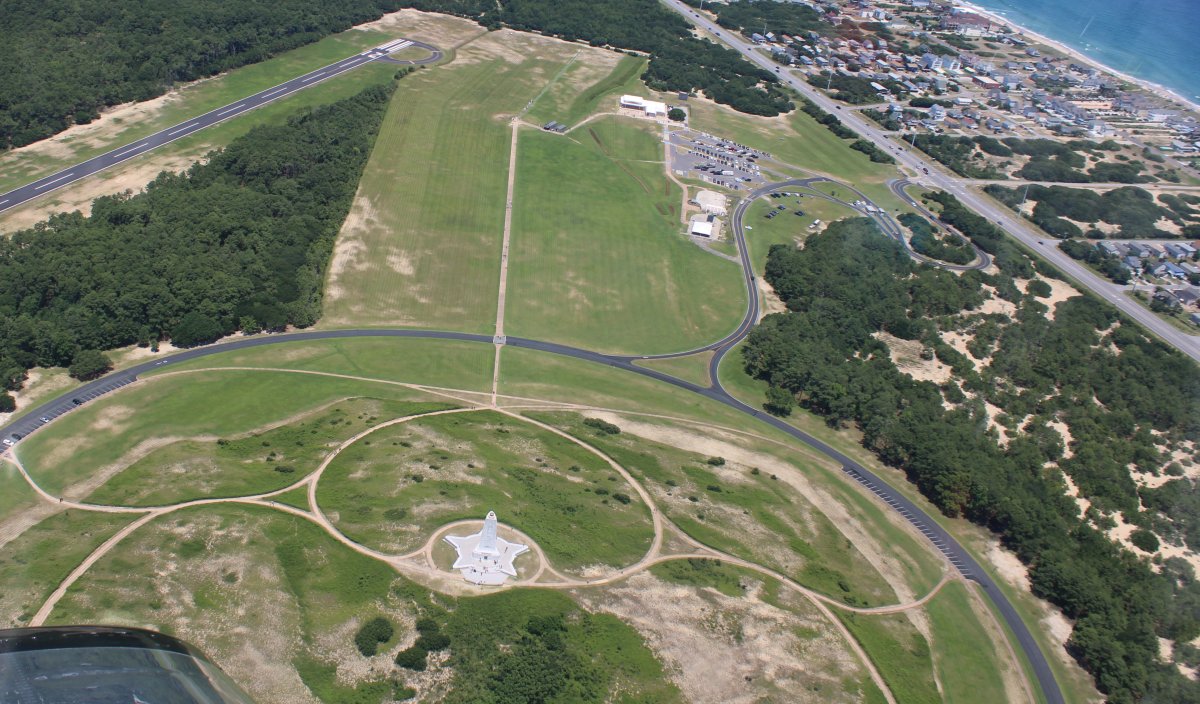
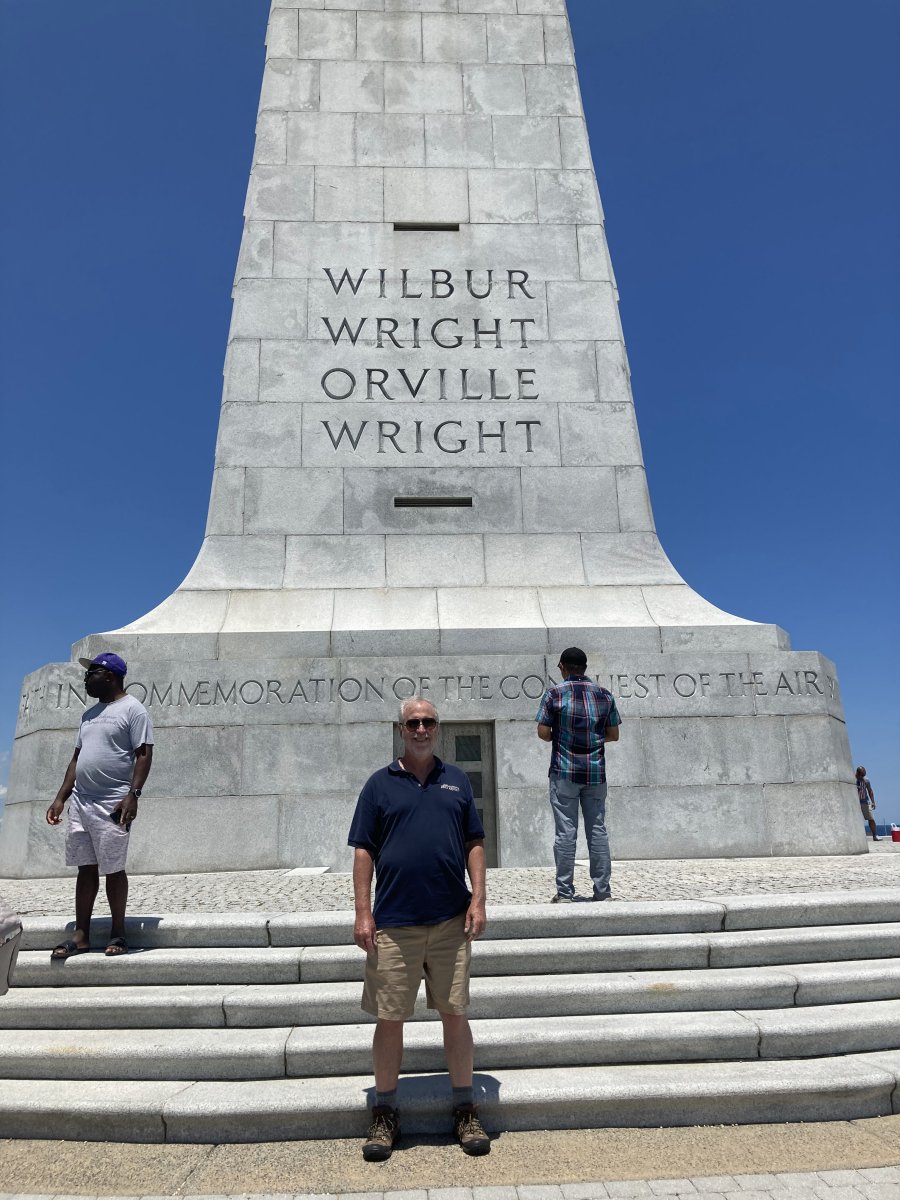
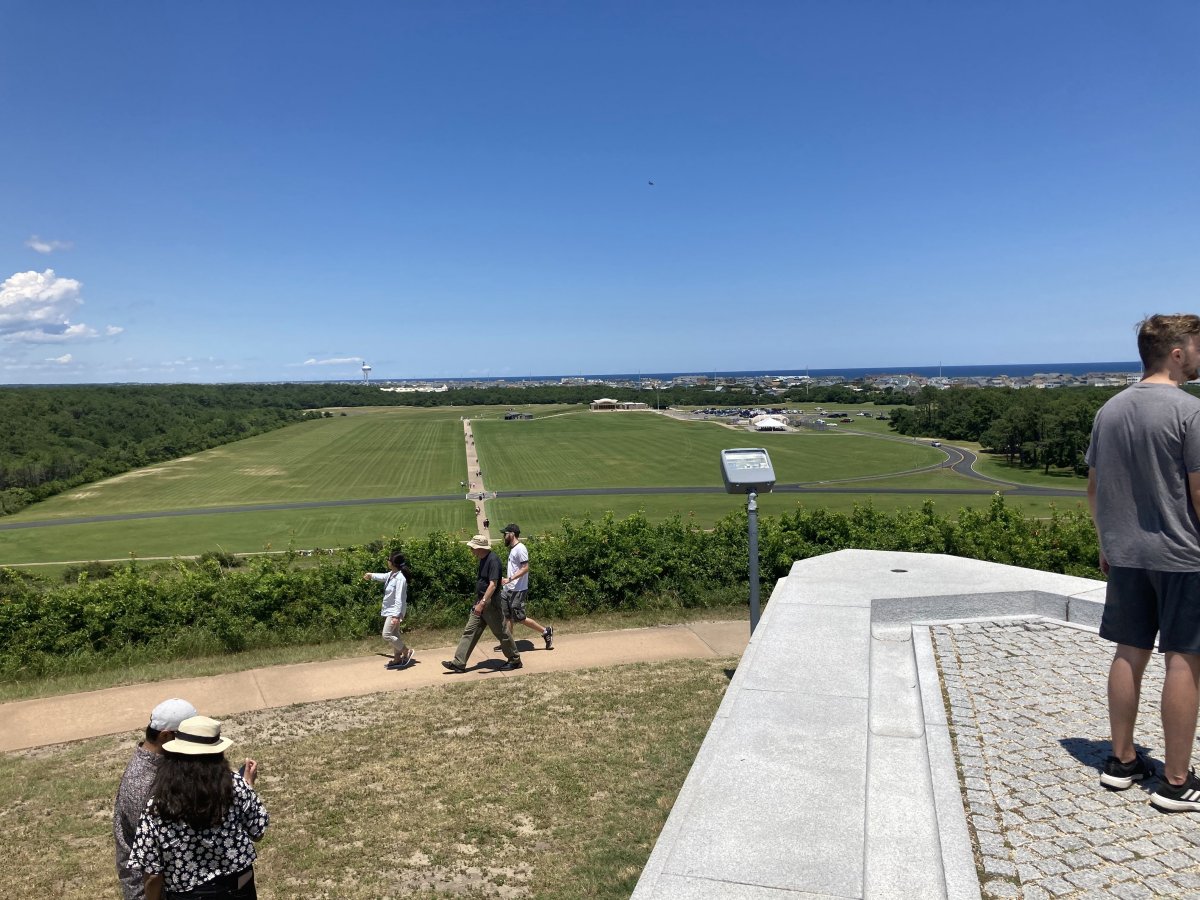
Inside the Visitor Center, looking at a replica of the 1903 Flyer.
The last time I was here, the Visitor's Center was closed for renovation. But now it is open. It doesn't look much different from what I remember. I think some of the presentation and displays have been improved and really do a good job of telling the amazing story of how the Wright Brothers figured out how to fly and the incredible effort that was required. The first time I came here back in the late 1980's National Park Rangers gave hourly talks; the one who did ours was exceptionally good. I don't think they do that anymore but the presentation and displays do a pretty good job of making up for it.
